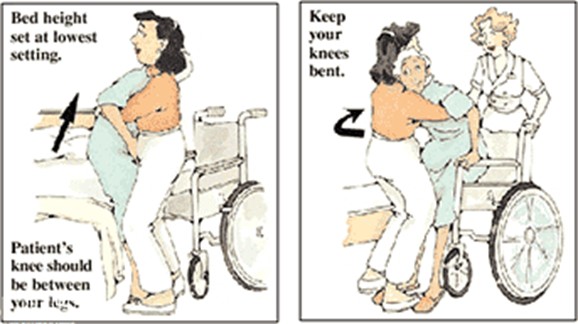What client should be seen by the nurse first?
A client with acute diarrhea.
A client who is anxious.
A woman who feels isolated.
An elderly man with a fractured hip.
The Correct Answer is D
A fractured hip in an elderly person can be a life-threatening injury due to the risk of complications such as blood clots, pneumonia, and infection.
It is important for the nurse to assess the man’s pain level, vital signs, and overall condition and initiate appropriate interventions as soon as possible.

Choice A) A client with acute diarrhea may require prompt attention to prevent dehydration, but it is not as urgent as a fractured hip.
Choice B) A client who is anxious may benefit from interventions to reduce anxiety, but it is not a life-threatening condition.
Choice C) A woman who feels isolated may benefit from social support and interventions to address her emotional needs, but it is not an urgent medical condition.
Nursing Test Bank
Naxlex Comprehensive Predictor Exams
Related Questions
Correct Answer is C
Explanation
Locking the wheels of the wheelchair is a priority action of the nurse to ensure client safety during a transfer from the bed to a wheelchair.
This prevents the wheelchair from moving or rolling away during the transfer, which could result in injury to the client.

Choice A is not an appropriate response because encouraging the client to push up from the wheelchair may not be safe or feasible for all clients.
Choice B is not an appropriate response because ensuring the client is bathed before getting into the wheelchair is not directly related to client safety during the transfer.
Choice D is not an appropriate response because placing the bed in the trendelenburg position could make it more difficult for the client to transfer
Correct Answer is C
Explanation
The priority responsibility of the nurse is to call for a Cambodian interpreter.
This ensures that the mother’s needs and concerns are accurately communicated and understood.
It also helps to prevent any misunderstandings or miscommunications that could occur if the daughter were to interpret.
Choice A is not an appropriate response because calling the chaplain for support may not address the language barrier.
Choice B is not an appropriate response because allowing unlicensed assistive personnel to interpret could result in inaccurate or incomplete information being conveyed.
Choice D is not an appropriate response because continuing to work with the daughter for interpretation could result in misunderstandings or miscommunications.
Whether you are a student looking to ace your exams or a practicing nurse seeking to enhance your expertise , our nursing education contents will empower you with the confidence and competence to make a difference in the lives of patients and become a respected leader in the healthcare field.
Visit Naxlex, invest in your future and unlock endless possibilities with our unparalleled nursing education contents today
Report Wrong Answer on the Current Question
Do you disagree with the answer? If yes, what is your expected answer? Explain.
Kindly be descriptive with the issue you are facing.
